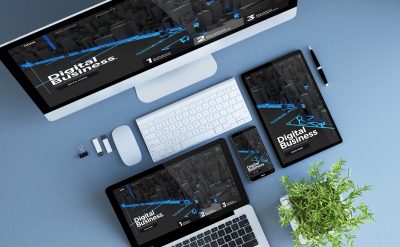Does your endpoint management extend to your mobile devices? This is one of the most important mobility questions that need to be answered when we are inducting smartphones and tablets in enterprises network. Most of the IT admins consider the mobile devices simply as one of the endpoints, just like any other traditional endpoints of the network such as PCs, printers or other network devices. What differentiates the mobile devices endpoints from the traditional endpoints is an employee dependency, network authentication and vulnerability of the device. Most of the organizations have a well-developed strategy for the endpoint management, while many of them have not yet taken the logical step moving the mobile devices into the fold. It’s always necessary to have mobile management that encompasses the needs, saves the day in case of risks and deliveries the policy-based mobile management.
We are going to concentrate exclusively on the Mobile Device Management (MDM) for mobile devices; it explores four major IT admins functions-enroll, take inventory, configure and secure for mobile devices as they do for traditional devices. Mobile device management will assist in improving the understanding the mobile enterprise management into their existing strategies for endpoint management. The main argument behind the mobile devices into endpoint management is that they play a big role in mobility solution space when employees are trying to get their work done. Here are certain pros and cons of dealing with mobility solutions in terms of Mobile Device Management (MDM)
Pros
IT admins will be willingly supported all the devices allowed onto the network, even if the employees personally own them (BYOD). Mobility solutions are all set to boost employee productivity on mobile devices; they support innovations like VoIP communication, cloud storage apps, workplace flexibility, and essential company software applications. A recent study was conducted to understand the effects of mobility solutions; it amounted to 16 percent gap in the productivity- amounting to more than six hours per week. Mobility solutions will depend on the effectiveness of employee and environment of actual work.
Cons
Mobility solutions have added the need for security policies that prevent the unauthenticated use of the enterprise’s network to gain access to data or prevent malicious activities. Mobile devices are one of the single points entry for security threats, which means that endpoint security has to cover mobile device security. Nokia in 2016 reported that mobile device infections grew by almost 63 percent from the first half of the year, during the same period the infection rate also grew by almost 83 percent. While 72 percent of the enterprises that have added the mobility solutions are concerned with data leakages/loss as their main concern is related to BYOD.
Mobile Device management: 4 main concerns to acknowledge
Having endpoint management include mobile devices entail four different administrative functions
1. Enroll
Devices that currently have access to the enterprise network tend to show that IT knows the smartphones and tablets do not run against. The admins need to ensure that hardware and software used to manage endpoints can locate and connect the mobile devices? One of the easiest way that this can be done is through the respective operating system. If the enterprises are providing the devices to the employees they need to configure the device based on the usage and function; The enrollment should be smooth whether its device by user or employees is also making the software installation.
2. Inventory
Once every device is connected to the network keeping the log of the device is important to maintain the device security and network security. IT admins should be able to see and report on every mobile device connected to the network.
i. Mobile devices may be accessing wireless networks or corporate resources; the IT admins should be able to monitor the inventory fast and in an efficient manner.
ii. Most of the devices have endpoint management, but it lacks the log facility giving the complete map of access based on the device and data needs.
iii. A complete endpoint inventory shows not only devices list but traditional characteristics of the model that includes maker, model number, OS version and update status (this would particularly be important when you want to provide security updates for the devices). Collecting the information in a report will be instrumental as the admins will be able to determine the platform to support the devices that whether they are non-compliant and whether any of them vulnerable.
Configure
Managing the endpoints includes being able to configure the devices over the network. The heterogeneous environment consists of multiple operating systems and mixed ownership; admins at enterprises maintain the homogeneity across different platforms. The ability to configure assist the admin install certificate for access to corporate resources, the admins should be able to uniformly install and maintain the applications, or apps employees need to do their job.
Secure
No device should be allowed on the network if it’s not necessary or secured. The same endpoint management feature that enforces security policies like demanding a password should also extend to all the mobile devices that need access to corporate resources.
Conclusion
Mobile Device Management (MDM) is still the basic form of device management when enterprises want to implement mobility requirements. Some policies work only with mobile devices owned by the organizations; users are less likely to allow the installation of the necessary software on a device they own and less inclined to risk corporate access to personal data on the device. Implementing the necessarily required device safety warrants that include locking a device, remotely wipe the device information or data or reset the complete device will assist the enterprises to completely configure the device based on the requirements of becoming IT admin.
To know more, download our latest whitepapers on mobility solutions.














